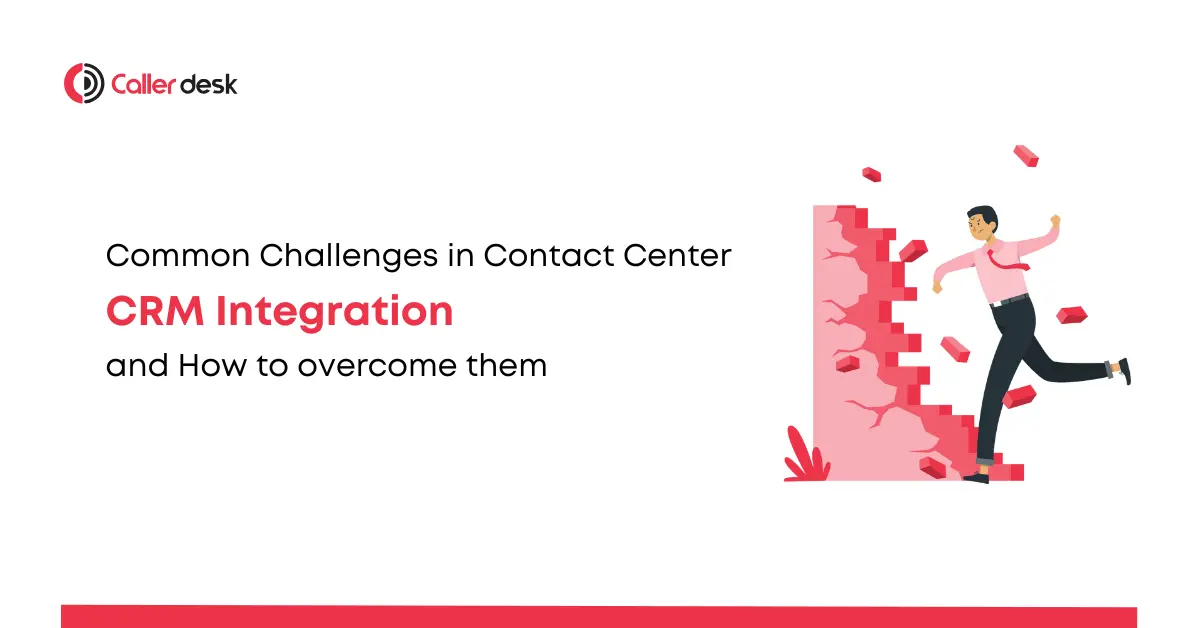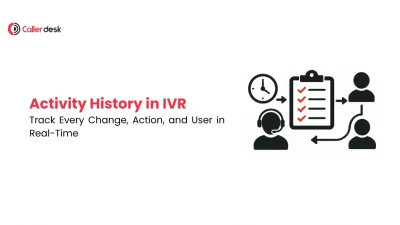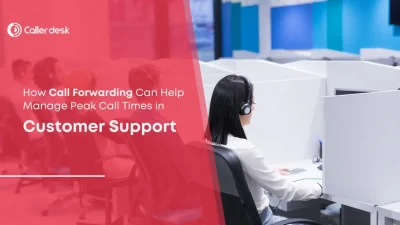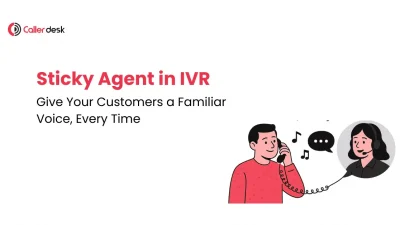Is your CRM system failing to work smoothly with your contact center? You’re not alone. Many businesses face challenges when integrating their Customer Relationship Management (CRM) system with contact center software, leading to inefficiencies and frustration.
A CRM system is designed to help businesses manage interactions with customers, store valuable data, and streamline communication across teams. Integrating it with your contact center software is critical to improving customer service, boosting team productivity, and driving business growth.
In this blog, we’ll explore the most common integration challenges and provide practical solutions to help you overcome them and maximize your CRM investment.
1. Data Silos and System Incompatibility
One of the biggest challenges in CRM integration is the creation of data silos. These occur when your CRM and contact center software fail to sync properly, causing fragmented customer data. As a result, agents struggle to access real-time information, making it difficult to deliver personalized and efficient service.
How to Overcome It
- Choose CRM systems that seamlessly integrate with your contact center software.
- Opt for solutions with two-way synchronization to ensure data remains up-to-date across all platforms.
- Look for tools like CallerDesk that offer pre-built integrations and robust APIs, making it easier to unify your systems.
Example:
A retail call center using CallerDesk eliminated data silos by integrating its CRM with CallerDesk’s system, enabling agents to access real-time customer profiles and transaction history. This improved first-call resolution rates by 30%.
Additional Insight:
According to a recent study, 47% of businesses cite data silos as a primary barrier to CRM effectiveness. Overcoming this challenge with a unified platform ensures that agents can provide a seamless customer experience.
2. User Adoption Challenges
Introducing a new CRM system often faces resistance from team members accustomed to the old system. Without proper buy-in and training, even the best CRM can fail to deliver results.
How to Overcome It
- Involve your team early in the selection and planning process to gain their trust and input.
- Highlight how the CRM will simplify their work and improve outcomes.
- Provide comprehensive training sessions and ongoing support to ensure agents are comfortable using the system.
CallerDesk Advantage:
CallerDesk’s intuitive interface and training resources reduce the learning curve, ensuring faster adoption. Regular follow-up sessions and user guides make it easy for teams to adapt seamlessly.
Real-World Example:
An insurance provider successfully transitioned to CallerDesk’s CRM by conducting role-specific training sessions. Within two months, user adoption reached 90%, and agent efficiency increased by 25%.
3. High Costs and Time Constraints
CRM integration can be a significant investment, both in terms of money and time. Unexpected delays or costs can further strain budgets, particularly for small and mid-sized businesses.
How to Overcome It
- Develop a detailed integration plan to manage costs effectively and avoid surprises.
- Use a phased implementation approach to spread costs over time.
- Opt for CRM solutions like CallerDesk that offer a cost-effective balance of features and value.
Tip:
Evaluate the long-term ROI of your CRM investment by considering the efficiency gains, revenue growth, and improved customer satisfaction it delivers.
Additional Insight:
A study by Nucleus Research found that businesses earn an average ROI of $8.71 for every $1 spent on CRM systems. Proper planning and budgeting ensure your investment delivers long-term value.
4. Data Security and Compliance Concerns
Contact centers handle vast amounts of sensitive customer information. Poorly secured CRM systems can expose businesses to data breaches and non-compliance penalties, jeopardizing both trust and operations.
How to Overcome It
- Select CRM and contact center software that adhere to industry-standard security protocols such as encryption and multi-factor authentication.
- Partner with vendors like CallerDesk that offer regular security audits and robust compliance with regulations like GDPR, CCPA, and HIPAA.
Example:
A healthcare provider using CallerDesk ensured HIPAA compliance by leveraging its advanced encryption features and secure access protocols, protecting sensitive patient data while improving operational efficiency.
Key Features to Look For:
- End-to-end encryption for data protection.
- Regular compliance updates to meet evolving regulatory requirements.
- Granular access controls to restrict unauthorized access.
5. Ignoring CRM Usability
Even feature-rich CRMs can fall short if they are difficult to use. A complicated system frustrates agents and reduces productivity, ultimately undermining the success of your integration.
How to Overcome It
- Choose a CRM that prioritizes usability and simplicity, especially for teams new to similar systems.
- Ensure the CRM can be customized to fit your specific workflows and processes.
- Test the CRM with a pilot group to gather feedback on its user experience before full implementation.
CallerDesk Advantage:
CallerDesk’s user-friendly CRM is designed with an intuitive interface that minimizes training time while offering advanced functionality tailored to your team’s needs.
Expanded Features:
CallerDesk also includes customizable dashboards and guided workflows, enabling agents to navigate tasks effortlessly and focus on delivering exceptional customer experiences.
6. Hidden Costs and Resource Allocation
Hidden costs can arise during CRM integration, including expenses for customization, training, and ongoing maintenance. Additionally, the process often demands significant involvement from IT and customer service teams, straining resources.
How to Overcome It
- Conduct a thorough resource and cost assessment before starting integration.
- Include all potential expenses in your budget, such as training, system upgrades, and additional staffing if necessary.
- Leverage CallerDesk’s transparent pricing structure and expert support to minimize unexpected costs and resource strain.
Example:
A telecom company avoided hidden costs by using CallerDesk’s clear cost breakdown and consulting services to streamline integration without exceeding its budget.
Conclusion
CRM integration with your contact center presents challenges, but the right strategies can ensure success. By addressing issues like data silos, user adoption hurdles, high costs, and data security concerns proactively, businesses can unlock the full potential of their CRM systems.
With its user-friendly design, seamless integrations, and advanced security features, CallerDesk offers a scalable CRM solution tailored to streamline workflows, improve customer service, and boost team productivity.
Ready to take your CRM integration to the next level? Schedule a free demo with CallerDesk today and experience the difference!
Frequently asked questions
1. Why is CRM integration with a contact center essential?
CRM integration enhances customer service and efficiency by providing agents with real-time access to customer data. It streamlines workflows, enables personalized interactions, and boosts team productivity, driving overall business growth.
2. What are the most common challenges in CRM integration?
Key challenges include data silos, user adoption resistance, high costs, time constraints, data security concerns, and hidden costs. Addressing these issues is critical to achieving successful integration.
3. How can I address data silos during CRM integration?
To eliminate data silos, use CRM and contact center tools with robust APIs and two-way synchronization. Tools like CallerDesk offer pre-built connectors and real-time syncing to ensure accurate and unified data.
4. What can I do to improve user adoption of a new CRM system?
Involve your team early, highlighting the benefits of the CRM for their workflows. Provide thorough training sessions, ongoing support, and clear instructions to make the transition easier and more effective.
5. How can businesses manage the high costs of CRM integration?
Careful planning and phased implementation can help spread costs over time. Select cost-effective solutions like CallerDesk that offer a balance of essential features and long-term ROI.
6. What data security measures should I prioritize in CRM integration?
Prioritize end-to-end encryption, multi-factor authentication, and compliance with regulations like GDPR and HIPAA. CallerDesk ensures regular security audits and advanced protection for sensitive customer data.
7. How does CRM usability impact team productivity?
A user-friendly CRM minimizes training time, reduces frustration, and helps agents work efficiently. Complicated systems can lead to underutilization and lower productivity, so simplicity is key.
8. What steps can I take to avoid hidden costs during CRM integration?
Assess all potential costs upfront, including training, maintenance, and customization. Use transparent pricing models like those offered by CallerDesk to avoid unexpected expenses and resource strain.
9. Can CRM integration improve customer satisfaction?
Yes, CRM integration enables faster resolutions, personalized service, and self-service portals, all of which enhance the customer experience and increase satisfaction rates.
10. Why choose CallerDesk for CRM integration?
CallerDesk offers seamless CRM integration, user-friendly interfaces, advanced security features, and transparent pricing. Its expert support ensures a smooth process, making it an ideal choice for businesses.





